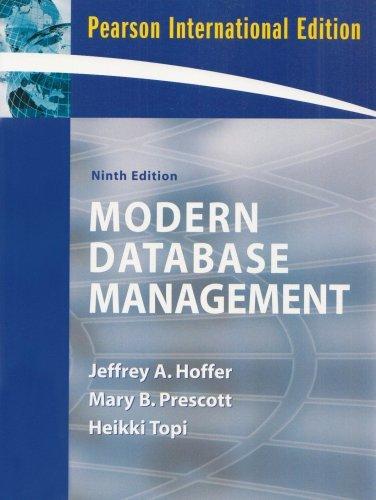Question
package search; import java.util.Set; import java.util.List; /** * An implementation of a Searcher that performs an iterative search, * storing the list of next states
package search;
import java.util.Set;
import java.util.List;
/**
* An implementation of a Searcher that performs an iterative search,
* storing the list of next states in a Queue. This results in a
* breadth-first search.
*
* @author liberato
*
* @param
*/
public class Searcher
private final SearchProblem
/**
* Instantiates a searcher.
*
* @param searchProblem
* the search problem for which this searcher will find and
* validate solutions
*/
public Searcher(SearchProblem
this.searchProblem = searchProblem;
}
/**
* Finds and return a solution to the problem, consisting of a list of
* states.
*
* The list should start with the initial state of the underlying problem.
* Then, it should have one or more additional states. Each state should be
* a successor of its predecessor. The last state should be a goal state of
* the underlying problem.
*
* If there is no solution, then this method should return an empty list.
*
* @return a solution to the problem (or an empty list)
*/
public List
// TODO
return null;
}
/**
* Determines what states are reachable from the start state in a
* certain number of moves
*
* @param m the number of moves from the start state
* @return a set of nodes
*/
public Set
// TODO
return null;
}
/**
* Checks that a solution is valid.
*
* A valid solution consists of a list of states. The list should start with
* the initial state of the underlying problem. Then, it should have one or
* more additional states. Each state should be a successor of its
* predecessor. The last state should be a goal state of the underlying
* problem.
*
* @param solution
* @return true iff this solution is a valid solution
* @throws NullPointerException
* if solution is null
*/
public final boolean isValidSolution(List
// TODO
return false;
}
}
********************************************************************************************************************
package puzzle;
import java.util.Arrays;
import java.util.List;
import search.SearchProblem;
import search.Searcher;
/**
* A class to represent an instance of the eight-puzzle.
*
* The spaces in an 8-puzzle are indexed as follows:
*
* 0 | 1 | 2
* --+---+---
* 3 | 4 | 5
* --+---+---
* 6 | 7 | 8
*
* The puzzle contains the eight numbers 1-8, and an empty space.
* If we represent the empty space as 0, then the puzzle is solved
* when the values in the puzzle are as follows:
*
* 1 | 2 | 3
* --+---+---
* 4 | 5 | 6
* --+---+---
* 7 | 8 | 0
*
* That is, when the space at index 0 contains value 1, the space
* at index 1 contains value 2, and so on.
*
* From any given state, you can swap the empty space with a space
* adjacent to it (that is, above, below, left, or right of it,
* without wrapping around).
*
* For example, if the empty space is at index 2, you may swap
* it with the value at index 1 or 5, but not any other index.
*
* Only half of all possible puzzle states are solvable! See:
* https://en.wikipedia.org/wiki/15_puzzle
* for details.
*
* @author liberato
*
*/
public class EightPuzzle implements SearchProblem
/**
* Creates a new instance of the 8 puzzle with the given starting values.
*
* The values are indexed as described above, and should contain exactly the
* nine integers from 0 to 8.
*
* @param startingValues
* the starting values, 0 -- 8
* @throws IllegalArgumentException
* if startingValues is invalid
*/
public EightPuzzle(List
}
@Override
public List
// TODO
return null;
}
@Override
public List
// TODO
return null;
}
@Override
public boolean isGoal(List
// TODO
return false;
}
public static void printState(List
String rowOne = state.get(0).toString() + state.get(1).toString() + state.get(2).toString();
String rowTwo = state.get(3).toString() + state.get(4).toString() + state.get(5).toString();
String rowThree = state.get(6).toString() + state.get(7).toString() + state.get(8).toString();
System.out.println(rowOne);
System.out.println(rowTwo);
System.out.println(rowThree);
System.out.println();
}
public static void main(String[] args) {
EightPuzzle eightPuzzle = new EightPuzzle(Arrays.asList(new Integer[] {1, 2, 3, 4, 0, 6, 7, 5, 8 }));
List
for (List
//System.out.println(state);
printState(state);
}
System.out.println(solution.size() + " states in solution");
}
}
Step by Step Solution
There are 3 Steps involved in it
Step: 1

Get Instant Access to Expert-Tailored Solutions
See step-by-step solutions with expert insights and AI powered tools for academic success
Step: 2

Step: 3

Ace Your Homework with AI
Get the answers you need in no time with our AI-driven, step-by-step assistance
Get Started


